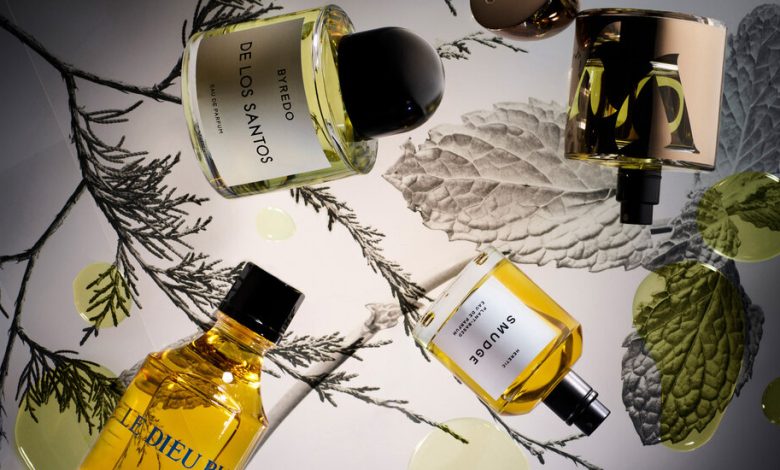The Smell of Magic

In the third-century B.C. Greek epic poem the Argonautica, the sorceress Medea wields fragrance as a magical weapon: In order to steal the coveted Golden Fleece, which is guarded by a dragon, she lulls the creature to sleep with a scented potion, escaping unscathed.
According to Dr. Britta Ager, an American classicist and the author of “The Scent of Ancient Magic” (2022), fragrance has long been associated with witchcraft and supernatural powers. “Across time and space, there’s a gut-level connection that humans instinctively make between scent and magic,” she says. Because the two things are “both immaterial but at the same time affect us profoundly,” she continues, in the classical world, the workings of scent were often seen as analogous to the supposed workings of magic. In ancient Greece, perfume was used in rituals ranging from the casting of simple farming spells to more elaborate religious ceremonies. The Oracle of Delphi was said to enter a trance by breathing in scented vapor that rose from cracks under the Temple of Apollo, allowing her to channel the divine.
Recently, a host of fragrance brands have turned to this age-old relationship with magic, like Vyrao, which was founded by the London-based former fashion consultant Yasmin Sewell in 2021 as a way to share her lifelong interest in mysticism. “I had many psychic experiences as a kid,” she says, and even now she relies on her strong intuitions about the future when making decisions. She created the line’s newest fragrance, the Sixth, in collaboration with the psychic Katt Nicholson, who often incorporates scent into her work, applying essential oils before meeting with clients. “I’ve always felt like I could get a stronger connection and more information through heightening my senses,” says Nicholson, who recommended ingredients like rosemary oil for reducing stress and basil oil to increase focus. The resulting blend, crafted by the Irish perfumer Meabh McCurtin, is herbaceous and spicy, with notes of angelica, fennel and apple settling into a base of patchouli and oakmoss.
The ritualistic use of aromatic smoke, perhaps the closest thing to scent made visible, has similarly ancient origins. In Greco-Roman Egypt, mystical practitioners burned kyphi, a compound incense that was also used in religious ceremonies, as part of their spells. “Clouds of incense smoke blocked out the smells of everyday life,” says Ager, “which framed ritual space and time as something set apart.” Kyphi now features in the Paris-based brand Astier de Villatte’s fragrance Le Dieu Bleu, made in collaboration with the French master perfumer Dominique Ropion and the French anthropologist Annick Le Guérer, who has written extensively about the history of scent; with other notes including myrrh and broom flower, the fragrance is both heady and bright. Douglas Little, the founder of the New York-based perfume brand Heretic, similarly drew inspiration from the Celtic practice of saining — in which practitioners set alight juniper branches to remove the influence of unfriendly spirits — for his Smudge scent, a smoky-sweet blend with juniper and clary sage at its heart, and a patchouli base.
Smoke was also a starting point for the New York-based brand Ourside’s Moon Dust scent. The line’s founder, Keta Burke-Williams, wanted the fragrance to feel otherworldly, she says. “First you’re hit with bright notes” of grapefruit and jasmine, she explains, “then grounded in earthiness” by Haitian vetiver. The blend’s smokiness comes from notes of palo santo, a wood that has been burned for centuries by shamans in various South and Central American cultures to clear negativity from spaces and people. It also appears in the Stockholm-based line Byredo’s De Los Santos scent, which the brand’s founder, Ben Gorham, describes as a tribute to communal ceremonies, both ancient and modern, that honor ancestors — and specifically those, like Dia de los Muertos, during which the veil separating the living from the dead is supposed to be especially thin. “They’re all about the contrast between a moment of mourning and a moment of celebration,” says Gorham, who combined clary sage, long prized as a cleansing agent, with musk and amber to give his scent earthy, woodsy depth.
The belief that fragrances have mystical capabilities hasn’t faded. For many contemporary spiritual and magical practitioners, the citrus-infused eau de cologne Florida Water remains an essential ingredient for rituals; created by the perfumer Robert Murray in 1808 and sold by the company Lanham & Kent, it later became popular among practitioners of the Voodoo religion in the Caribbean and the American South. Priestess Miriam Chamani, the founder and head of the New Orleans-based Voodoo Spiritual Temple, often uses Florida Water as a divinatory aid when engaging in bone throwing, a ceremony in which one tosses fragments of animalbone onto a cloth adorned with astrological symbols and derives meaning from the resulting arrangement. “It allows a person to calm their mind and center themselves beyond their fears,” she says of using the scent. “It quiets you down so the universe can come to you.”
